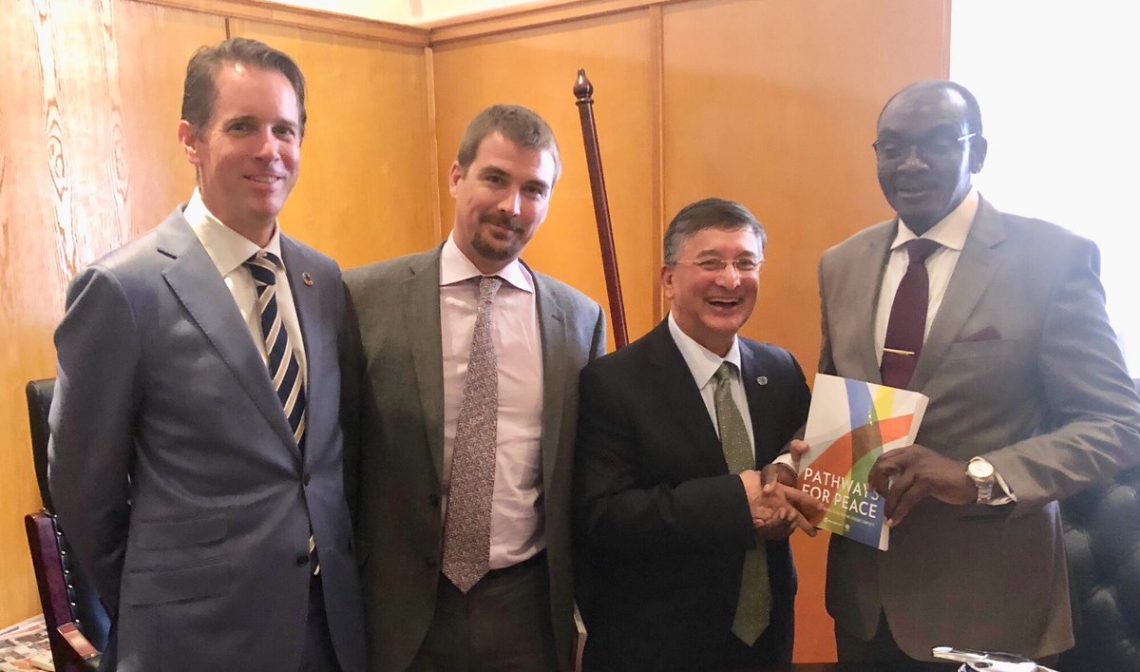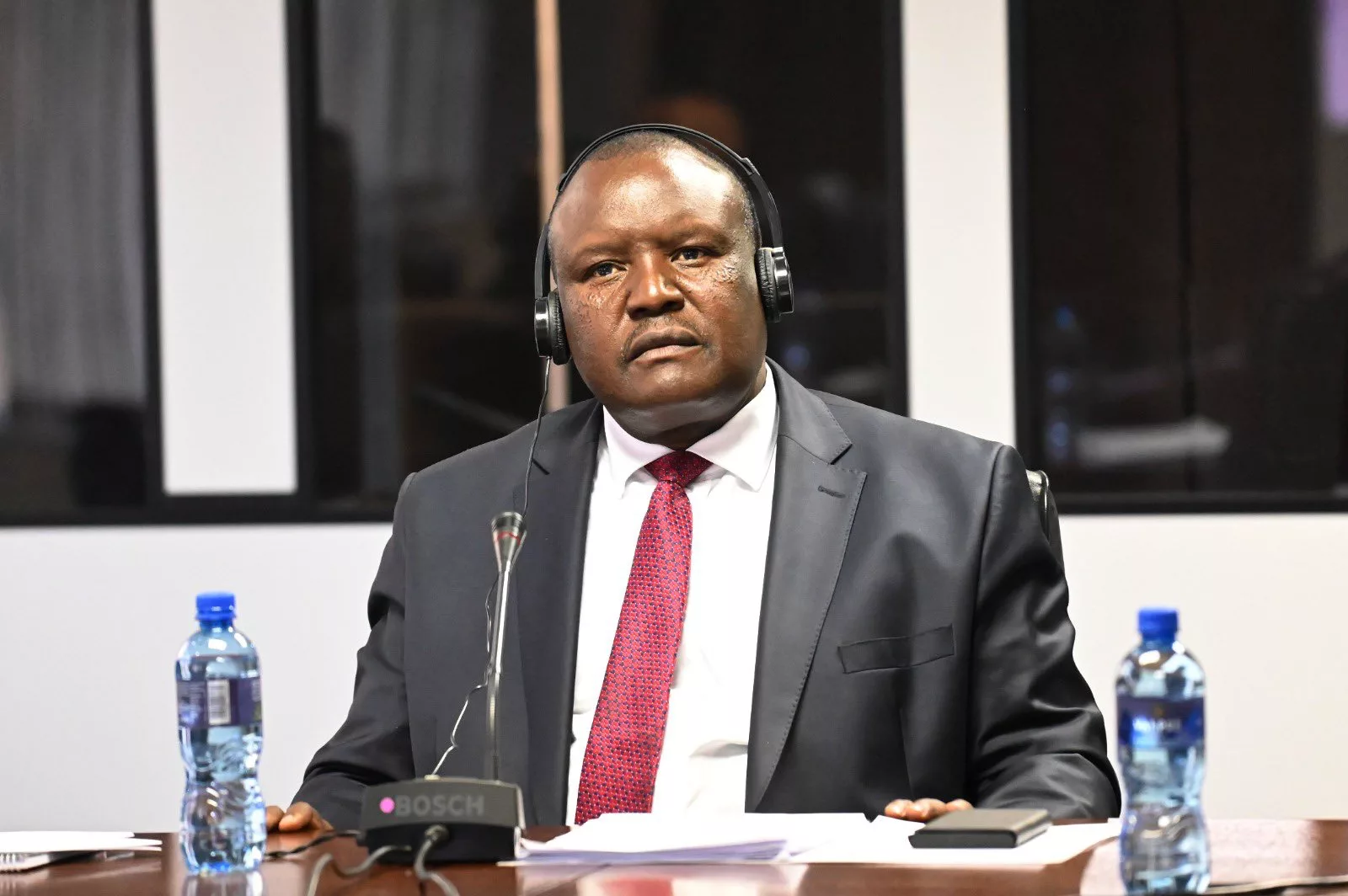The Vice President of the Republic of Zimbabwe, Hon. Kembo Mohadi who oversees peace and reconciliation initiatives in Government has launched today the Pathways for Peace global study together with UN Resident Coordinator Mr Bishow Parajuli, World Bank Country Manager Mrs. Mukami Kariuki, and Ambassador of Sweden to Zimbabwe HE. Sofia Calltorp here in the capital, Harare.
The study launched under the theme, “Pathways for Peace: Inclusive Approaches to Preventing Violent Conflict” brought together around 80 representatives from Government, UN, Development Partners, Civil Society Organisations and the Media. The report is a joint United Nations and World Bank study published in 2018 to look at how development processes can better interact with diplomacy and mediation, security and other tools to prevent conflict from becoming violent.
Commending the Government and the People of Zimbabwe for embedding principles of peace, reconciliation and social cohesion as constitutional values and development imperatives, UN Resident Coordinator, Bishow Parajuli said, “the launch of the Pathways for Peace report comes at a key moment in Zimbabwe – where the cabinet has approved a two-year transitional stabilisation programme for the country, which recognises and prioritises reforms related to the rule of law, access to justice, constitutional alignment, social protection, reconciliation, peace and national unity.”
Highlighting that the articulation of national unity, peace, social cohesion and reconciliation as the bedrock for sustainable social and economic development in Zimbabwe, the Hon. Vice President Mohadi said: “Whilst sustainable development is our ultimate goal, the need to build sustainable peace architecture is a key enabler for the country’s sustainable development.”
The launch put a spotlight on the interconnectedness of Peace and Development – “no development without peace and no peace without development” – and the centrality of UN engagement to promote peace in line with the UN Charter across the globe.
Underlining that prevention of conflict is always better than cure and a pathway to enduring peace, Mrs. Mukami Kariuki, World Bank Country Manager for Zimbabwe said, “developing an enabling environment that seeks to prevent and resolve conflicts in all spheres – social, economic and political is essential and the World Bank looks forward to further dialogue that would contextualise the recommendations of the Pathways for Peace report.”
Stressing the critical importance of inclusivity in peace-building efforts, H.E. Sofia Calltorp, Ambassador of Sweden said: “Women are key agents in building more resilient and peaceful societies. It is therefore of fundamental importance that we all make an effort to include more women in peace-building and developmental processes.”
The study underlines that the resurgence of violent conflict in recent years has caused immense human suffering, at enormous social and economic cost. This has increasingly become an obstacle to achieving the 17 Sustainable Development Goals (SDGs) by 2030. These goals aim to end poverty, hunger, inequality, and achieve quality education, universal health, water and sanitation, gender equality, economic progress and environmental protection for all by 2030. Of the total 169 targets of the SDGs, 36 targets are directly related and necessary to achieve peace, justice and inclusion. The commitment of these targets reflects the role of peace as an indispensable condition of sustainable development. To achieve the SDGs, the report alludes on the need to build and maintain strong global, regional, national and local/grassroots partnership.
There is also a strong business case, beyond human suffering for investing in prevention and maintaining peace. Noting the wellbeing of everyone would be served well by preventing conflict and directing resources to socio-economic progress and environmental prudence in line with the SDGs, Mr. Jago Salmon, Advisor to UN Peace Building Support Office and one of the authors of the study said, “Prevention investments in four countries experiencing high levels of violence would save the affected countries and the international community USD 34 billion per year.”
The report shows that global, regional and national development and economic strategies need to go beyond incremental changes to systemic transformation. The report further makes a case for capable institutions to be developed to balance individual and collective rights and freedoms at all levels.
The Pathways for Peace reviews the experience of different countries and institutions to highlight elements that have contributed to peace. Central to these efforts is the need to address grievances around exclusion from access to power, opportunity and security.
The report reiterates that member States hold the primary responsibility for prevention, but to be effective, underlines the need for the involvement of civil society, the private sector, regional and international organisations.






